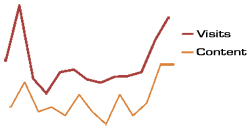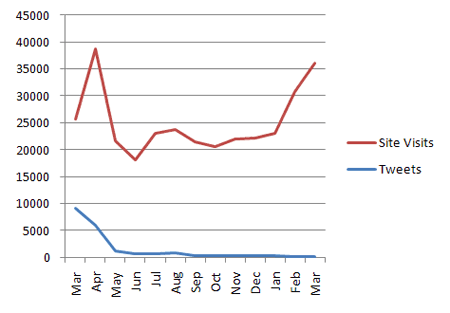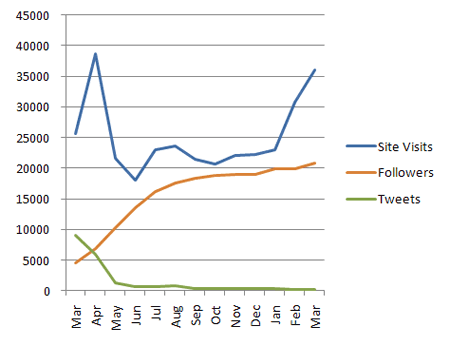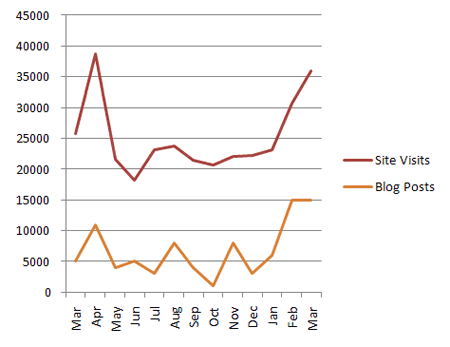
I suspect that you want to know, “is Twitter good for SEO?” Either that, or your bum is feeling pretty sore, and you are willing to try anything. I am happy to help with the Twitter part, and I am sorry about your rump. Try pistachio, but don’t blame me if it doesn’t work.
I am surprised that more people have not discussed the topic of Twitter and SEO to provide their opinion-based answers. I think that a lot of people are afraid to touch on this, for fear of giving an unpopular answer, or being wrong. Well, leave it to me to tell you this: “Yes, Twitter helps SEO!”
Twitter can help with SEO efforts, directly, as well as indirectly when Twitter users share the information in places such as blogs, social bookmarking sites, and elsewhere. If somebody tells you otherwise, you are listening to the wrong SEO advice.
I read an article on the widely respected SEOmoz.org blog today that addressed the SEO value of Twitter. It reminded me how much I sometimes forget the importance of bringing things down to a very simple level. I guess I just forget that not everybody has done this “Internet thing” to earn food for the past decade and a half. I try to keep things pretty simple, but I know I can wing one over readers’ heads some days. I try to provide useful marketing and SEO tips, but if I ever forget to make them simple, I apologize. This one should be nice and easy.
I thought that the value of Twitter for SEO was pretty obvious to most users, a long time ago. Sometimes, when I see what other people are saying, I recognize that details like this can slip by some people. Here is a quote from the recent article on SEOmoz titled “The Social Media Marketer’s SEO Checklist“:
The article had some good points, but it really did take me back to grammar school. Quoting the article, “Now that we know” … what? Holy hemorrhoid! I guess I assumed that we knew this kind of thing years ago. Links from my old Yahoo chat groups in 1998 helped my SEO, but is that revolutionary, too? It was kind of funny to me how much it resembled something I said in early 2009 when I wrote the book “Twitter for Business: Twitter for Friends“. Here is a statement I made in the book, and I stand by it today:
Heck, maybe the Internet is coming up to speed, or maybe I am just one of those people who are as strange as a pickled duck fart and foresee things in some uncanny way. I don’t know … maybe it is a combination.
Do More Tweets Help SEO?
This should be obvious, but the impact of more people tweeting your website content may be even higher than you imagined. Whenever somebody tweets your linked content, it creates links to your website. The quality and quantity of inks to a website are the most important factors that search engines use to gauge the importance of a website. Also, the links Twitter produces are not necessarily only on Twitter. There are a lot of services which aggregate Twitter’ed content, as well as many widgets and other syndication through RSS in which it may appear on other websites.
It will be far more important for other people to tweet your content than just tweeting your link a squillion times. Don’t bother with that, because it is not going to make you a ton of new friends. A few times is fine, but let’s not go out of the way to garner death threats, and insults about your mother.
Do More Twitter Followers Help SEO?
I am the last person who would wish to promote a “Twitter follower-frenzy”, so I almost hate to say this. Many indicators will suggest that more followers on Twitter can improve the SEO value of a tweet. Yes, a high follower count does correlate to higher SEO value, but I believe it correlates even better with the number of Twitter lists a person is on and other measurements.
I know that a lot of people want to become popular on Twitter, but before you implement some off the cuff plan, be sure to read the article titled “How To Become Popular on Twitter Without Actually Being Useful“. If you do the things that many moronic marketers suggest, people will wish a bad case of herpes on you and throw you on a flaming bed of nails before they will care to listen to you … or buy your stuff.
The important factor is being useful and giving people what they want. Here you go … try thinking a little bit more like this video.
There is not much that I dislike more than a bunch of bad marketers out there with nothing useful to say. I think that millions of Twitter users would agree with me on this. Don’t take this as any suggestion that you go and try to gather as many Twitter followers as you can. Instead, I recommend, as I always have, that you be useful. As with anything SEO-related, being useful and providing compelling information is what matters the most. If you can do that, many of the other factors seem to magically fall into place. I am pretty sure it can also help hemorrhoids, even better than ice cream.
Twitter Changed, But it is Still Useful for SEO
Although I still really like Twitter, it changed a lot over time. Twitter had a huge growth spurt, and as the new users poured in, much of the real value of the service dwindled. It is still good for SEO, but what so many people do not grasp is that if you expect people to tweet and retweet what you have to share, it had better be pretty damn awesome to be heard over the excess noise.
How much did Twitter change? I could write another book about this, but I would rather stick needles in my eyes. I will just offer this: I wrote about Twitter retweets on February 29th, 2009. It was titled “Twitter: The Tweet About Retweet” and it received many hundreds of retweets. Tweetmeme says 420, but that data is old, and it was actually many more. In another case, I wrote a really short and basic article (approximately 250 words) about Twitter username selection on April 8th of 2009. It also received a ton of retweets and 158 reader comments. Back in the earlier days, I would measure between 500-1,500 clicks on darn near any link I tweeted, within minutes. Now, a hundredth of that would buzz my radar.
Maybe I just became less “brilliant” with the things people love to share, but I am pretty sure that is not the case. Many Twitter users just don’t see it when they are trying to follow a squillion other people, with hopes of being followed back.
Today, when I tweet something from my blog, I do not count on Twitter to pass it along. In fact, Twitter directly accounts for under three percent of my website traffic. Moreover, I have measured that the website traffic coming directly from Twitter has a low probability of participating and adding their comments to a topic. I think this is because of Twitter-enhanced attention disorders which were there before Twitter. Twitter just made it even more “old fashioned” to actually read things and pay attention. My study on this is forthcoming, but let’s just start the study with whether you will take the time to finish reading and add your comment.
Since the time of these popular Twitter-related articles, I have written hundreds of very compelling and useful blog articles which far exceeded the relatively minor value of those. I can effectively measure the value of Twitter from a conversational standpoint as much lower than it was. The SEO value of Twitter and the Twitter “retweet” is still there, but if you want to break through the noise, it better be something stunning.
As I said in the article titled “Is Squidoo Good for SEO? Likely More Than You Think!“, I must add a basic disclaimer as follows:
If you came here about the ice cream, I am sorry about your bum. Perhaps you could try eating it really fast to take your mind off the ‘roids. If you came here about Twitter and SEO, please add your comments on my blog. Just type it in and let’s have a good old fashioned ice cream social.
Photo credit to weelakeo via Flickr
Podcast: Play in new window | Download



